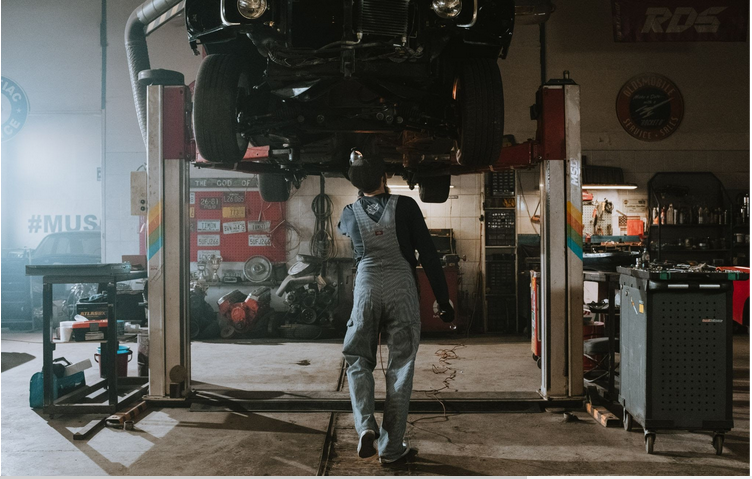 Miya Bholat
Miya Bholat
Sep 17, 2021
Reactive Maintenance - What It Is and How to Reduce It
Anyone who owns a fleet knows how hard it is to make sure that every vehicle is running at its best capacity. To do this, you need to make sure that your vehicles are serviced and maintained regularly.
For the purpose of this article, we’ll divide maintenance into reactive and preventative. Reactive maintenance means that you’re making repairs after the vehicle has broken down, while preventative maintenance is routine maintenance that prevents large, costly breakdowns.
Why Should You Reduce Reactive Maintenance?
Before we jump into what you can do to reduce reactive maintenance we should explore why you should even work to reduce it.
Reactive Maintenance Is Costly
Your budget likely isn’t adjusted for reactive vehicle fixes. Sure, you can set aside a portion of your budget for unexpected maintenance. However, what if more than one vehicle breaks down?
You’ll need to reallocate your budget or take that money out of your profits, and none of these options is good for your business in the long run.
On the other hand, emergency repairs mean your vehicle will be out of service for a while, leaving you short staffed, causing delays in deliveries, making your customers angry. And we’ve already learned everything about the importance of ETAs.
Shorter Vehicle Longevity
If you’re only repairing your fleet once something goes wrong, your vehicles aren’t in their optimal condition at all times, which means they won’t last as long as they could.
This means that over time, you’ll be losing more money than earning from the initial investment you made on these cars, vans, trucks, or any other vehicle in your fleet.
It’s Unsafe
Sudden vehicle issues are a hazard to your drivers. They could cause accidents and get seriously hurt. No matter how good of an insurance you have - you should never put your employees’ lives at risk.
Ractive Repairs Take More Time
Mechanics take more time with reactive repairs, compared to preventative ones, because they have multiple steps to resolving the issues.
After diagnosing the problem, they need the time to acquire replacement parts, and only then can they actually start working.
How Can You Reduce Reactive Maintenance?
What you do to reduce reactive maintenance depends on your internal procedures, however, we’ll share some tips and we hope you’ll find some of them useful.
Moving to a Different Maintenance Type
We mentioned in the beginning that there’s preventative maintenance. This can be your regularly scheduled 6-month maintenance for example. But there’s also predictive maintenance which is gaining popularity among fleet managers.
Predictive maintenance uses both historical and real-time data to calculate potential risks and issues that could arise with your vehicles. This approach requires more tools, as the technology uses AI, machine learning, and needs to connect to multiple systems in order to work properly - but it’s definitely worth the hype.
Tracking Reactive Maintenance History
If you aren’t looking to switch to a complicated software solution that can help you create a predictive maintenance approach, a fleet maintenance app, like AUTOsist, can help you keep a history log of reactive repairs and sudden breakdowns that happened within your fleet easily.
Well, you’ll get a chance to spot patterns in repairs. You could see that a certain brand of turn signal bulbs lasts shorter than the other, and you can avoid it in the future.
All the data you get here can be helpful when you’re scheduling preventive maintenance appointments for your fleet. Both you and the mechanic will know exactly what to pay special attention to without a hustle of going through old service books.
Create a Transparent Relationship with Your Drivers
Not all drivers will be honest with you from the get-go, and it’s not a secret that some of them will hide certain issues in order to avoid potential punishment. You need to work with your team to avoid this behavior.
Encourage drivers to give you honest reports and direct feedback as soon as they notice something is wrong with their vehicle. Otherwise, they’re creating an unsafe work environment, and putting their lives, as well as lives of others, at risk.
Tackling Region-Specific and Industry-Specific Issues
If your fleet is moving in extremely cold or overly hot weather, you need to pay attention to the issues that could occur due to the climate, such as batteries freezing. You should also think about the roads your vehicles are taking - whether they’re more rural, or recently renovated. All of this affects the vehicle's health, and can cause issues that require reactive maintenance.
Industry-specific issues are more related to the type of cargo your fleet is carrying. If they’re hauling heavy equipment you need to pay attention to shock and struts.
With proper knowledge, and a fleet maintenance app, a fleet manager can easily predict these issues and ensure preventative repairs for the fleet.
Wrapping Up
Reducing reactive maintenance and switching more to predictive and preventative methods is a way to keep your employees safe, prolong your vehicles usage, reduce overall costs of maintenance, and keep your customers happy.
To keep reactive maintenance at a minimum you need to have a transparent relationship with your employees, track reactive repairs’ history, think about the specific causes for breakdowns in your region or industry, and switch to a different maintenance model.
This all might seem easier said than done, and it will take time to implement new models and see the change they’re bringing. But, the benefits are undeniable, and in the end it will be completely worth your while.
